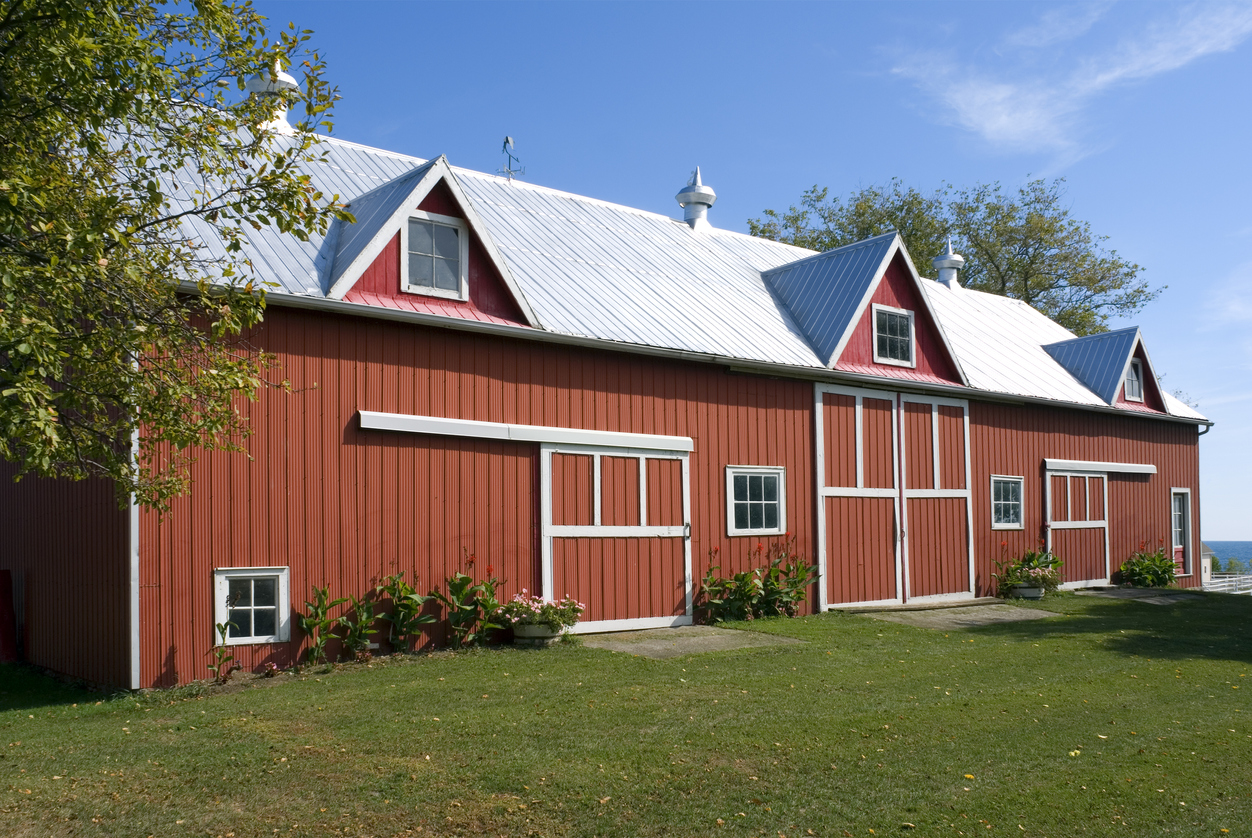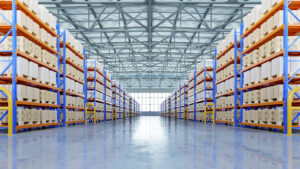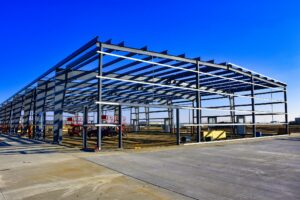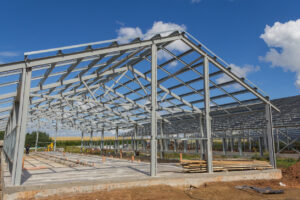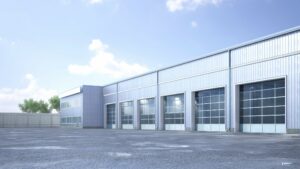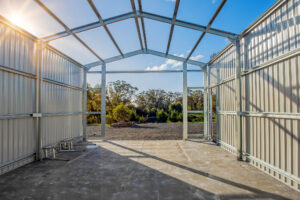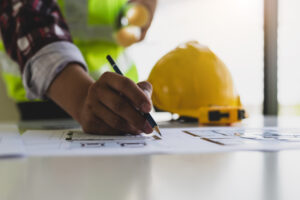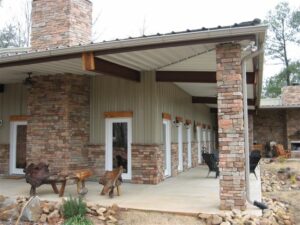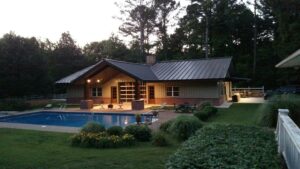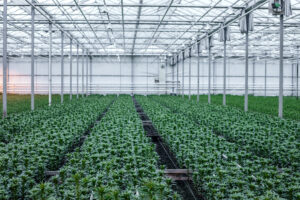Metal office buildings have become increasingly popular in the corporate world due to their many advantages. Whether you are planning to construct and design a brand new office space or looking for a cost-effective and sustainable option for your growing business, metal buildings offer a wide range of benefits.
This guide will walk you through the basics of metal office buildings, their key features, the types of metal used, the benefits they offer, the design process, and the construction process.
By the end, you will have a comprehensive understanding of metal office buildings and be equipped to make an informed decision for your office space needs.
Table of Contents
- Understanding the Basics of Metal Office Buildings
- Benefits of Metal Office Buildings
- Designing Your Metal Office Building
- Construction Process of Metal Office Buildings
- Things to Consider
- Conclusion
- Frequently Asked Questions
Understanding the Basics of Metal Office Buildings
Metal office buildings have witnessed a significant rise in popularity within the corporate world. The demand for these structures can be attributed to their durability, affordability, and eco-friendliness. As businesses seek sustainable solutions that can accommodate their expanding operations, metal buildings provide a viable option.
The Rise of Metal Buildings in the Corporate World
Over the years, metal buildings have emerged as a top choice for businesses across various industries.
Prefabricated construction, which includes metal buildings, has been steadily growing in the US. The global prefabricated building market was valued at USD 95.9 billion in 2020. In 2023, the market size was estimated at USD 145 billion and is projected to reach USD 240.3 billion by 2032, expanding at a compound annual growth rate (CAGR) of 6.9%.
This shift in preference can be attributed to several factors. Firstly, metal buildings offer a cost-effective solution compared to traditional construction methods.
By utilizing preengineered components, businesses can save both time and money on construction. Secondly, they can be constructed in a shorter time frame, allowing businesses to occupy their office space sooner.
This is particularly beneficial for companies that need to quickly expand their operations or relocate to a new facility.
Finally, the sustainability and durability of metal buildings make them an attractive option for businesses looking to reduce their environmental impact while ensuring their office space can withstand the test of time.
Key Features of Metal Office Buildings
Metal office buildings boast several key features that set them apart from traditional construction methods. Their steel frames provide exceptional strength and stability, ensuring long-lasting structures.
This durability not only protects the investment of the business but also provides a safe working environment for employees. Additionally, metal buildings are highly resistant to pests, fire, and natural disasters, offering businesses added security and peace of mind.
This level of protection is crucial for businesses that operate in areas prone to extreme weather conditions or other potential hazards.
Moreover, these structures are customizable, allowing businesses to create a unique office space that aligns with their specific requirements and aesthetic preferences.
From open floor plans to multiple stories, metal office buildings can be designed to accommodate the unique needs of any business.
Types of Metal Used in Office Buildings
Various types of metals are used in the construction of metal office buildings, each offering unique properties and benefits. Some of the commonly used metals include:
- Steel: Known for its strength and durability, steel is a popular choice for metal office buildings. It provides excellent resistance to corrosion and rust, making it ideal for structures that need to withstand harsh weather conditions. Steel also offers versatility in design, allowing businesses to create innovative and modern office spaces.
- Aluminum: Aluminum is lightweight yet sturdy, making it suitable for applications where weight reduction is desired. It also offers good resistance to corrosion, making it a viable option for offices located in areas with high humidity or proximity to the coast. Additionally, aluminum can be easily recycled, further enhancing its eco-friendly characteristics.
Another metal commonly used in the construction of metal office buildings is galvanized steel. Galvanized steel is steel that has been coated with a layer of zinc, providing added protection against corrosion.
This makes it an excellent choice for buildings located in areas with high levels of moisture or salt exposure, such as coastal regions. The galvanization process not only enhances the durability of the steel but also gives it a visually appealing finish.
Furthermore, some metal office buildings incorporate a combination of different metals to take advantage of their strengths.
For example, a building may have a steel frame for structural support and an aluminum exterior for its lightweight and corrosion-resistant properties. This combination allows businesses to optimize the performance and longevity of their office buildings.
Check out: Metal Mall Buildings: What Are They?
Benefits of Metal Office Buildings
Metal office buildings offer numerous benefits that make them an attractive option for businesses of all sizes. Let’s explore some of the key advantages below:
Durability and Longevity
Metal office buildings are known for their exceptional durability and longevity. Unlike traditional construction methods that may require frequent maintenance and repairs, metal buildings can withstand harsh weather conditions, pests, and fire.
This durability translates into reduced maintenance costs over the lifespan of the building, providing businesses with long-term savings.
Moreover, the structural integrity of metal office buildings allows for greater design flexibility.
Architects and designers can create innovative and modern spaces with large open areas, high ceilings, and unique architectural features.
This flexibility enables businesses to customize their office buildings to meet their specific needs and aesthetic preferences.
Cost-Effectiveness
One of the primary advantages of metal office buildings is their cost-effectiveness. Compared to traditional construction methods, metal buildings are typically more affordable due to the efficient manufacturing process and reduced construction time.
Additionally, metal structures require less ongoing maintenance, resulting in lower operating costs for businesses.
Furthermore, metal office buildings are highly customizable and can be easily expanded or modified as business needs evolve. This scalability feature allows companies to adapt their workspace without the need for extensive renovations or costly construction projects.
The ability to quickly adjust the layout and size of the office building provides businesses with a competitive edge in a dynamic market.
Sustainability and Eco-Friendliness
As businesses increasingly prioritize sustainability, metal office buildings offer an eco-friendly solution. The materials used in metal buildings can be recycled, reducing waste and environmental impact.
Metal structures also provide excellent insulation properties, reducing energy consumption for heating and cooling. This energy efficiency contributes to a greener office space and lower utility bills.
Additionally, metal office buildings are often constructed using prefabricated components, which minimizes construction waste and ensures efficient use of materials. The streamlined construction process of metal buildings also reduces the overall carbon footprint of the project.
By choosing a metal office building, businesses can demonstrate their commitment to environmental stewardship and sustainable practices, aligning with the growing demand for eco-conscious workplaces.
Designing Your Metal Office Building
Designing your metal office building allows you to create a functional and aesthetically pleasing space that meets your unique requirements. Consider the following factors during the design process:
Modern Design Trends
Stay up-to-date with modern design trends to create a contemporary and visually appealing office space. Incorporating elements such as ample natural light, open floor plans, and green design features can enhance the overall ambiance of your metal building.
Additionally, consider incorporating biophilic design principles into your metal office building.
This approach focuses on connecting occupants with nature to improve well-being and productivity. Features like indoor plants, natural materials, and views of green spaces can create a more inviting and calming work environment.
Customization Options
Metal office buildings offer a high level of customization, allowing businesses to tailor their space to their specific needs.
Consider factors such as the layout, number of rooms, and special requirements for equipment, storage, or collaborative areas.
Work closely with architects and designers to ensure your metal office building reflects your business’s unique identity and fosters productivity.
Furthermore, explore the possibility of incorporating sustainable design practices into your metal office building.
Features like energy-efficient lighting, recycled materials, and water-saving fixtures not only reduce environmental impact but can also lead to cost savings in the long run.
Space Planning for Efficiency
Efficient space planning is crucial in optimizing the functionality of your metal office building. Consider the flow of traffic, the arrangement of workstations, and the allocation of shared spaces to ensure an efficient and productive office environment.
A well-planned layout can enhance collaboration, communication, and overall employee satisfaction.
Moreover, think about flexible workspace design concepts that allow for easy adaptation to changing business needs.
Incorporating movable furniture, modular partitions, and multi-functional areas can ensure that your metal office building remains versatile and responsive to evolving work trends.
Did You Know?
According to the Metal Building Manufacturers Association (MBMA), metal buildings account for approximately 40% of all low-rise, non-residential construction in the US.
Construction Process of Metal Office Buildings
The construction process consists of several stages, each contributing to the successful completion of your project. Understanding the process can help you navigate through the construction journey smoothly:
Preconstruction Planning
During the preconstruction phase, it is essential to engage with architects, contractors, and engineers to develop a detailed plan for your metal office building.
This includes obtaining necessary permits and approvals, discussing design specifications, and establishing a realistic timeline and budget. Thorough planning lays the foundation for a successful construction project.
One important aspect of preconstruction planning is site selection. Choosing the right location for your metal office building is crucial as it can impact factors such as accessibility, visibility, and future expansion possibilities.
Evaluating the site’s soil conditions, proximity to utilities, and zoning regulations are all vital considerations that can affect the overall success of your project.
Building and Assembly
Once the preconstruction planning is complete, the building and assembly process begins. This involves the fabrication of the metal components off-site, transportation to the construction site, and the meticulous assembly of the building.
They are typically quicker to construct compared to traditional methods, minimizing disruptions to your business operations.
During the building and assembly phase, it is important to ensure quality control at every step.
This includes conducting regular inspections of the fabricated components to ensure they meet the required standards.
Additionally, skilled workers with expertise in metal construction techniques play a crucial role in ensuring the structural integrity and aesthetic appeal of the final building.
Postconstruction Considerations
After the construction phase, it is crucial to evaluate the final product and address any remaining tasks.
This may include conducting a final inspection, addressing any cosmetic or functional adjustments, and ensuring all systems and utilities are fully functional.
Taking the time to thoroughly review the finished metal office building guarantees a seamless transition into your new workspace.
Furthermore, postconstruction considerations also involve implementing sustainable practices to reduce the environmental impact of your metal office building.
This can include installing energy-efficient lighting systems, utilizing renewable energy sources, and implementing recycling programs.
By incorporating sustainable features, you not only contribute to a greener future but also potentially reduce long-term operational costs.

Things to Consider
When considering metal office buildings, you should thoroughly evaluate several critical factors to ensure the feasibility, attractiveness to tenants and overall profitability of the project.
Construction Costs
Initially, the construction costs of metal buildings are lessened due to materials like steel and aluminum being cheaper per square foot compared to traditional materials such as concrete or brick.
The cost of constructing metal office buildings ranges from $110 to $150 per square foot, depending on the size, location, and customization. This cost includes materials for buildings that are less than 100k square feet.
Additionally, the prefabrication process associated with metal buildings speeds up construction times, which in turn reduces labor costs. Another factor adding to the direct savings is the reduced need for extensive and costly foundations, typically required for heavier structures, making metal buildings more economical from the start.
Metal buildings present a clear advantage in terms of long-term operational savings.
Their durability and minimal maintenance requirements mean lower costs over the building’s lifetime.
Unlike traditional materials that may need frequent repairs or replacements, metal structures withstand time with less direct upkeep, leading to considerable savings.
Financing Options
Traditional banks and financial institutions are becoming more accommodating to the evolving construction landscape, offering specialized financing options for prefabricated and modular constructions, including those involving metal buildings.
This shift acknowledges the growing popularity and efficiency of such construction methods, presenting a viable financial pathway for individuals and businesses looking to invest in these modern building techniques.
Did You Know?
As part of the IRA, the DOE has announced up to $530 million in competitive grants to support the adoption and implementation of the latest model energy codes, zero energy codes, and building performance standards. These grants aim to modernize building stock and improve energy efficiency, which can benefit metal building projects.
Furthermore, for those interested in pursuing energy-efficient and sustainable building projects, government programs present a valuable resource.
These programs may offer grants, tax incentives, or loans designed to encourage the adoption of green building practices.
Tenant Demand
Metal office buildings offer a modern aesthetic and customization options that appeal to businesses aiming for a contemporary and distinctive workspace.
Additionally, the flexibility and potential for rapid expansion or modifications provided by metal buildings are significant advantages.
Such features meet the growing needs of businesses, making metal buildings a compelling option for those seeking adaptable and cost-effective office solutions.
Location and Zoning
To ensure regulatory compliance when selecting a location for metal office buildings, it’s critical to verify that the chosen site is zoned for commercial use and permits such building materials and methods.
Additionally, local architectural guidelines and review boards may impose specific standards on the building’s design, particularly its exterior appearance.
This requires a thorough understanding and anticipation of these regulations to avoid potential setbacks and to align the project with community expectations.
The permitting process for construction projects, especially those involving metal materials, can present unique challenges and opportunities.
Familiarizing oneself with the local procedures is essential for navigating potential obstacles efficiently. This includes identifying any expedited pathways available for metal construction projects, which can significantly reduce the timeframe and costs associated with obtaining necessary approvals.
Conclusion
The construction process involves careful planning, precise building and assembly, and thorough postconstruction considerations.
By understanding the various stages and considerations involved, you can ensure a successful and efficient construction journey.
Embrace the opportunities presented by metal office buildings, and embark on a construction journey that will provide your business with a long-lasting and efficient workspace.
Since 2001, SteelCo has been a leading PEMB materials provider, dropshipping high-quality building materials across the US, and also offering commercial construction services in Georgia for a wide range of building and client industry types.
On the PEMB side, we assist our clients in navigating local building codes and construction timelines, providing basic conceptual designs and stamped engineering plans to simplify the process of obtaining necessary permits and licenses.
Learn more about our expertise in PEMB commercial buildings and how we can assist you in your metal office building project.
—————————————-
Frequently Asked Questions
Are metal office buildings environmentally friendly?
Sustainability is a key advantage of metal buildings. These structures are constructed using recycled materials, and the metal used can be fully recycled at the end of the building’s lifespan.
This circular approach to resource use reinforces green building practices, allowing for the design and construction of buildings that can achieve high sustainability standards, including LEED certification.
Beyond sustainability, metal buildings offer significant energy efficiency benefits. The incorporation of insulated panels and reflective roofing materials plays a pivotal role in reducing energy consumption within these structures.
Can metal office buildings be aesthetically pleasing?
Yes, advancements in architectural design and finishes allow for aesthetically pleasing metal office buildings. They can be customized with various exterior finishes, colors, and textures to match or enhance the surrounding environment.
Are there tax reductions for metal office buildings?
Under Section 179D of the Internal Revenue Code, commercial building owners, including those investing in metal office buildings, may be eligible for a tax deduction for energy-efficient improvements.
Qualifying improvements must meet specific energy-saving targets for heating, cooling, ventilation, and lighting systems.









